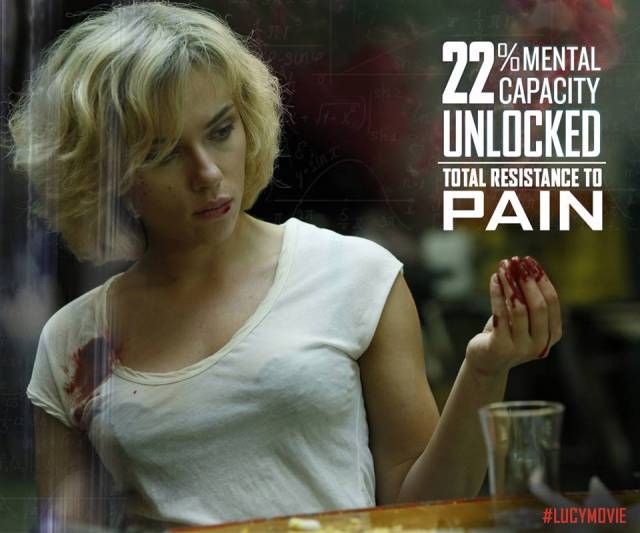.jpg)
I thought, you think too well.
Are you also one of those who believe that the average percentage that our brain uses is only ten percent?
The 10 percent of the brain myth is a widely perpetuated urban legend, it tells that most or all humans only use 10 percent (or even less than 10%) of their brain.
In the 1970s, psychologist and educator Georgi Lozanov proposed the teaching method of suggestopedia believing "that we might be using only five to ten percent of our mental capacity".
Some propagates that the "ten percent of the brain" belief by asserting that the "unused" ninety percent of the human brain is capable of exhibiting psychic powers and can perform hipsychokinesis and extra-sensory perception. There is no scientifically verified body of evidence supporting the existence of such powers. Gaya na lamang ng Movie na 'LUCY' which is umabot siya sa 100% at naging isang Superhuman.
But the ten percent myth most likely arose from a misunderstanding (or misrepresentation) of neurological research in the late 19th century or early 20th century. It has been attributed to many people, including Albert Einstein. In extrapolation, it is suggested that a person may harness this unused potential and increase intelligence. At dahil hindi matibay ang ebidensya at pag-aaral tungkol dito, hindi pinaniwalaan ng iba ang teoryang ito na kung saan ay gumawa sila ng ebidensya na magpapatunay na hindi lamang 10% ng ating isipan ang gumagana.
Neurologist Barry Gordon stated the myth as false or menacious, adding, "We use virtually every part of the brain, and that (most of) the brain is active almost all the time." Neuroscientist Barry Beyerstein sets out seven kinds of evidence refuting the ten percent myth:
Studies of brain damage: If 10 percent of the brain is normally used, then damage to other areas should not impair performance. Instead, there is almost no area of the brain that can be damaged without loss of abilities. Even slight damage to small areas of the brain can have profound effects.
Brain scans have shown that no matter what one is doing, all brain areas are always active. Some areas are more active at any one time than others, but barring brain damage, there is no part of the brain that is absolutely not functioning.
Technologies such as Positron Emission Tomography (PET) and Functional Magnetic Resonance Imaging (FMRI) allow the activity of the living brain to be monitored. They reveal that even during sleep, all parts of the brain show some level of activity. Only in the case of serious damage does a brain have "silent" areas.The brain is enormously costly to the rest of the body, in terms of oxygen and nutrient consumption. It can require up to 20 percent of the body's energy—more than any other organ—despite making up only 2 percent of the human body by weight. If 90 percent of it were unnecessary, there would be a large survival advantage to humans with smaller, more efficient brains. If this were true, the process of natural selection would have eliminated the inefficient brains. It is also highly unlikely that a brain with so much redundant matter would have evolved in the first place; given the historical risk of death in childbirth associated with the large brain size (and therefore skull size) of humans, there would be a strong selection pressure against such a large brain size if only 10 percent was actually in use.
Localization of function: Rather than acting as a single mass, the brain has distinct regions for different kinds of information processing. Decades of research have gone into mapping functions onto areas of the brain, and no function-less areas have been found.
Micro-structural analysis: In the single-unit recording technique, researchers insert a tiny electrode into the brain to monitor the activity of a single cell. If 90 percent of cells were unused, then this technique would have revealed that.
Synaptic pruning: Brain cells that are not used have a tendency to degenerate. Hence if 90 percent of the brain were inactive, autopsy of normal adult brains would reveal large-scale degeneration.
This case still remains unsolved.
"There is NO LIMIT to what the human brain can accomplish."
